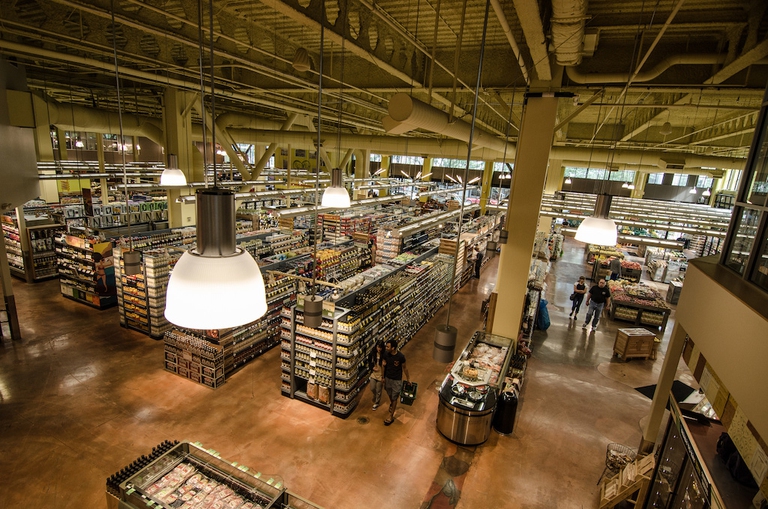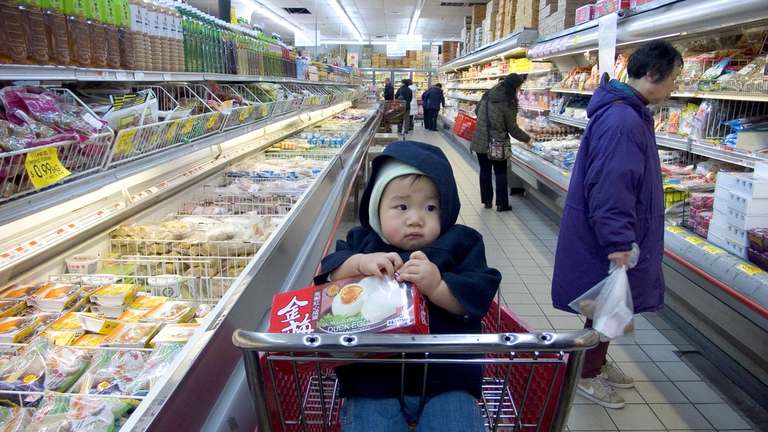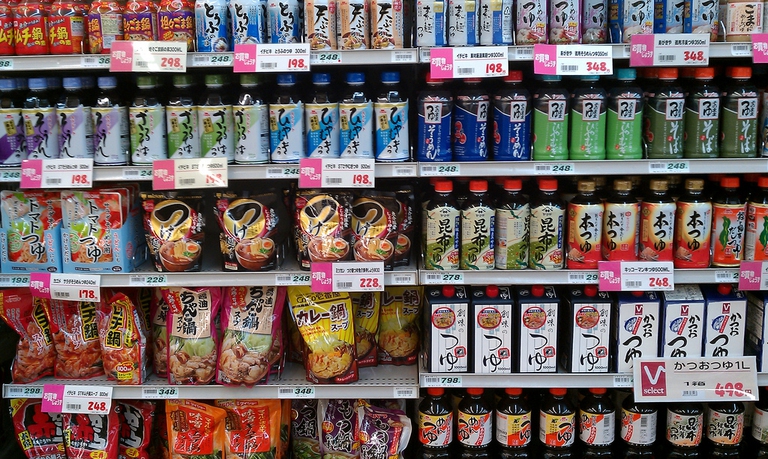
Factory farming conditions and antibiotic-resistant pathogens emerging as a result of them pose an existential threat to humans in the form of zoonotic diseases. Why it’s time to produce and consume food more thoughtfully.
The art of suggestion and kindness draws on the science of layout, on the choice of music, on scents artfully sprayed onto strategically positioned bags of chips that we didn’t set out to buy (but on seeing them there, are already tempted). And so, the special art of science, psychology and neuro-physiology are all brought
The art of suggestion and kindness draws on the science of layout, on the choice of music, on scents artfully sprayed onto strategically positioned bags of chips that we didn’t set out to buy (but on seeing them there, are already tempted). And so, the special art of science, psychology and neuro-physiology are all brought to life in the setting of a modern supermarket.
Today, shopping malls are bringing together and focusing what used to be lots of individual shops and local stores. There has been a growing trend around the world for decades. In Italy, one goes to the supermarket to meet 70 per cent of the family’s food needs, and that goes for several other countries too. And once you’re there, 60 per cent of purchases are unplanned, impulse buys.
Of course it goes without saying that major retail chains have really honed and polished their skills in improving the customer experience, and here we reveal some of the tricks of the trade. There’s nothing wrong with being tempted into buying a little more, but being aware is a way of choosing between resisting or yielding.
It may seem normal, but the mere fact of providing customers with shopping carts and baskets is one crucial way of making them feel comfortable. 75 per cent of those who hold a basket for shopping always buys something, compared to just 34 percent of those not holding it. In some countries at the entrance to the supermarket you’ll find a smiling employee holding out baskets for customers. These plastic containers with added wheels are as deep a wishing well: in 20 years the capacity of the US shopping trolley has doubled.
Do your shopping with us and get discounts and prizes. What do supermarkets get from this strategy? First, they can do sophisticated market research. Protocol studies are under way that can match our purchasing behavior in a store to ads on Facebook, and once we receive a loyalty card we tend to prefer the store that sent it. Finally, it seems that 42 per cent of us, spend more money when we become a card owners, perhaps because it makes us think that the more we buy, the bigger the discounts and that therefore we’re spending less. It should be noted that discounts are generally made on products that we wouldn’t normally purchase anyway.
Music deeply affects people’s mood and there are so many ways to use its influence. Cheerful music which we sing along to conditions us to buy because of our good mood and attitude; but even a slower song can make us buy more, getting our pace to about 90 steps per minute. Music with fewer than 90 beats per minute makes us slow down unconsciously, and makes us linger in the aisles.
The science of layout reaches unexpected sophistication in shelf arrangements. Every chain has its own well-coded areas, whether its the entrance area, the bakery or the frozen foods section. But the general rule that emerges is that all the necessities such as flour, sugar, salt and especially UHT milk sit on shelves that are concealed and distant from both the entrance and the exit, prolonging wandering among lanes, which increase the likelihood of buying things that weren’t wanted originally.
Items that cost 5.00 will be sold for 4.99 and the reason for is so that they’re easily remembered. Rounding up involves mental effort that is greater than the process of storing the first digit. Given the barrage of information that customers deal with, pricing needs to be transmitted quickly. The most convenient way of doing it, in terms of memory and attention, is to remember just the first digit. So we appear to spend less.
This classic offer has been proven to increase sales by more than 150 per cent. In spite of saving 30 per cent, operations like this lead us to consume far more than usual.
Staple products, canned goods, butter and milk attract people into supermarkets but almost everyone knows how much they cost on average by heart. To beat the competition and spread the idea of a convenient price point, best sellers at discounted prices are spread throughout the store. Supermarkets then compensate these by raising prices on other products.
When we go shopping there’s always a dozen products we buy routinely. That’s why managers occasionally mix up goods between aisles and shelves. This means that when we go there to get the usual package of something and – lo and behold – in its place we find another item that is twice as expensive and we think, “OK, let’s try it”.
Products displayed at eye level sell twice as much, so for this reason often the most expensive items are placed there. Below them you will almost always discover cheaper alternatives.
It’s inevitable. Waiting in line at the checkout, you’ll be tempted by a variety of irresistible, colorful sweets, the blandest of food accessories and the most alluring packaging. These hard-to-resist temptations for adults become simply irresistible for kids bored with shopping, and laid out at their eye level, within easy reach of little hands, parents will more often than not buy things not normally on their list – just to avoid a tantrum.
Siamo anche su WhatsApp. Segui il canale ufficiale LifeGate per restare aggiornata, aggiornato sulle ultime notizie e sulle nostre attività.
![]()
Quest'opera è distribuita con Licenza Creative Commons Attribuzione - Non commerciale - Non opere derivate 4.0 Internazionale.
Factory farming conditions and antibiotic-resistant pathogens emerging as a result of them pose an existential threat to humans in the form of zoonotic diseases. Why it’s time to produce and consume food more thoughtfully.
The world of cinema recognises the link between food choices and the climate crisis by offering vegan menus for awards season events, including at the most important of them all: the Oscars.
Let’s look at the reasons behind the growth of veganism in India, as a small yet vocal section of the population turns towards this diet and lifestyle in the largest milk producing country in the world.
by Jeffrey Y. Campbell, Manager of the Forest and Farm Facility at FAO In the Ecuadorian Amazon, Kichwa farmers grow dozens of products on tiny parcels of land. Their lands hum with biodiversity, yielding nutritious foods that have sustained families for generations. Wandering among fruit and nut trees and crops, these indigenous agroforesters fill their baskets
Mint has many health benefits, but in food it’s often accompanied by artificial green colourings. Instead, Galatea has created a green mint ice cream in a completely natural way.
We’re talking about Galatea, a company that produces semi-finished products for artisanal ice creams using high quality ingredients, natural colouring, excluding thickeners and hydrogenated fats, respecting the environment and supporting the less fortunate.
The mad rush to fake food, like fake meat made with genetically-modified soy, ignores the importance of the diversity of our foods and culinary cultures. It’s a recipe to accelerate the destruction of the Planet and our health.
Like with all foods, the quality of an ice cream can be discerned by reading its label. An expert explains how to do this, and tells us how their company steers clear of chemicals, using only natural ingredients to produce an excellent and “free” ice cream.
Quality ingredients, no artificial colouring and hydrogenated fats. These are the main features of a great ice cream. But what makes an ice cream parlour “good”, i.e. sustainable?













